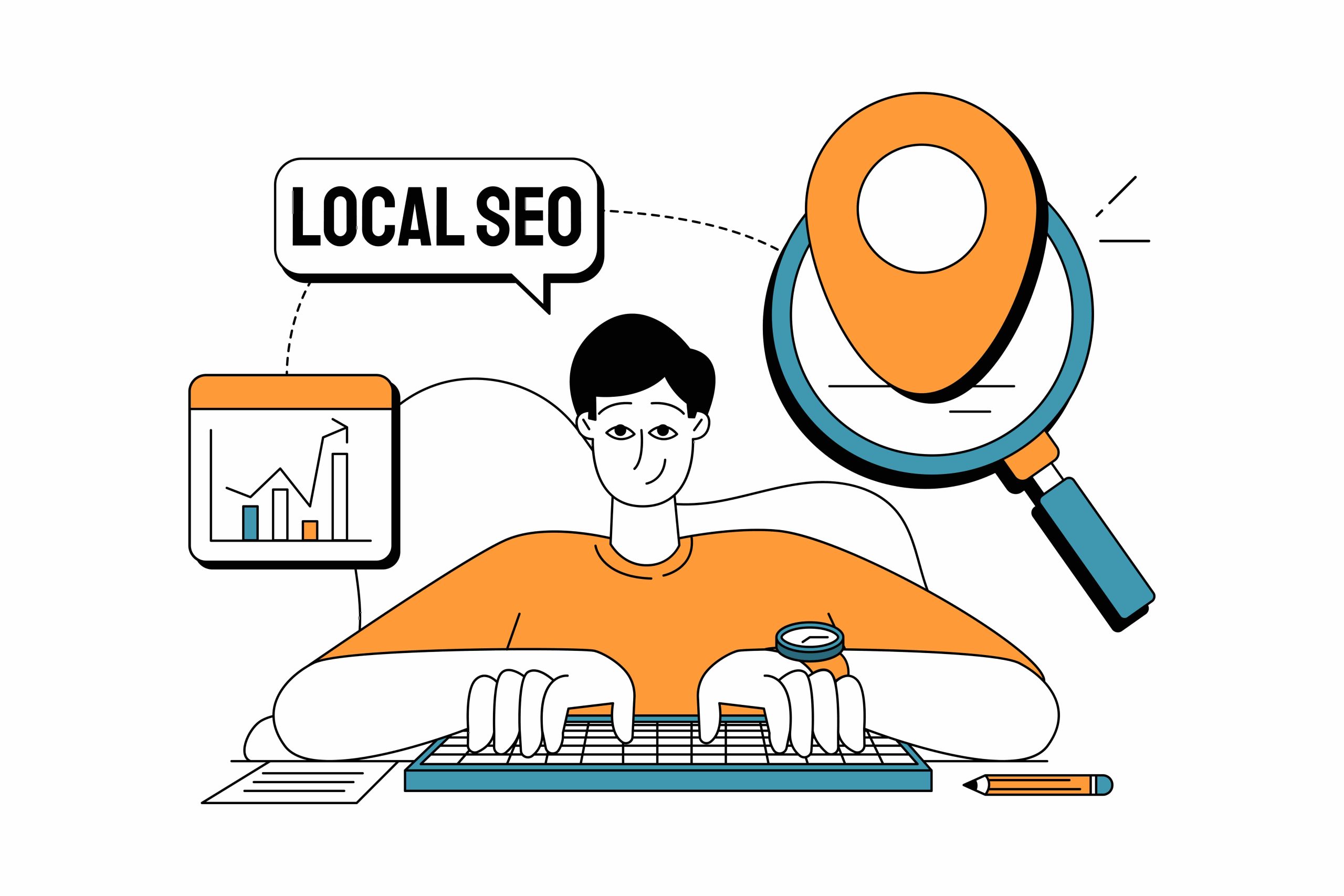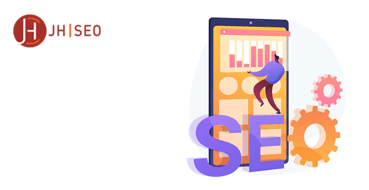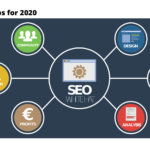In the vast wilderness of the internet, visibility is the key to survival. For businesses and individuals alike, the art and science of Search Engine Optimization (SEO) have become essential in carving out a distinct presence online and to be able to understand SEO, you will need to also know how search engines work. But what exactly is SEO, and how does it function in the digital ecosystem?
Understanding SEO
SEO is not just a collection of tactics but a philosophy grounded in the foundation of search engines: to connect users with the most relevant content for their queries. In essence, search engine optimization is the process of optimizing your online content—be it a website, a blog, or a podcast—for search engine algorithms. It’s the strategic curation of keywords, links, and tags designed to enhance your ranking on the search engine results pages (SERPs).
With over 5.6 billion searches conducted on Google every day, the significance of SEO for businesses cannot be overstated. It’s the bridge between your brand and your audience, ensuring that potential customers can find you when they need to. Strong SEO can lead to increased organic traffic, better site usability, and a higher return on investment (ROI) for your marketing efforts.
SEO has undergone a remarkable transformation since the early days of the World Wide Web. What began as a simple concept of keyword optimization has expanded to include a myriad of factors, from content quality and mobile-friendliness to site speed and user experience. Keyword stuffing and other “black-hat” techniques that once reigned supreme have been eclipsed by the pursuit of value-driven content.
What is Organic Search?
Organic search refers to the unpaid, natural listings that appear on search engine results pages (SERPs) in response to a user’s query. These listings are generated based on the search engine’s algorithmic assessment of a website’s relevance to the search terms entered by the user.
In the context of SEO (Search Engine Optimization), organic search refers to the process of optimizing a website to improve its visibility and ranking in these unpaid search results. SEO techniques aim to enhance various aspects of a website, such as its content, structure, and authority, to make it more appealing to search engines and increase its chances of ranking higher in organic search results for relevant queries.
Organic search results are distinguished from paid search results, which are displayed separately on SERPs and appear as advertisements. Unlike paid search, where advertisers bid on specific keywords to have their ads displayed, organic search rankings are determined by factors such as the relevance, quality, and authority of the website’s content, as assessed by search engine algorithms.
Achieving a high ranking in organic search results through effective SEO strategies can drive significant amounts of targeted traffic to a website, as users tend to trust and click on organic listings more than paid advertisements. Additionally, organic search traffic is generally considered more sustainable and cost-effective in the long term compared to paid search traffic.
Components and Best Practices
Keywords: The Foundations of SEO
Selecting the right keywords is akin to choosing the right trail in a forest—they guide both search engines and users to your content. Though the era of keyword stuffing is long gone, keywords still form the backbone of your SEO strategy. We’ll explore keyword research tools and methodologies to hone your keyword strategy.
On-Page SEO: Architectural Elements
On-page search engine optimization involves optimizing individual web pages to rank higher and earn more relevant traffic in search engines. This entails the strategic placement of keywords in titles, descriptions, headers, images, and the body of the content. We’ll discuss tactics for crafting compelling meta descriptions, structuring URLs, and more.
Off-Page SEO: Building a Network
Off-page SEO, while less in your direct control, is just as vital. It’s about the reputation of your website in the eyes of search engines and users. We’ll look at the significance of backlinks, guest posting, and social media in amplifying the relevance and authority of your content.
Technical SEO: The Machinery of the Web
From the backend infrastructure of your site to the user’s experience, technical SEO ensures everything runs smoothly. We’ll demystify topics such as website speed, mobile optimization, site maps, and the importance of secure connections.
On-Page SEO
Search Engine Optimization, or SEO, can feel like an impenetrable fortress for the uninitiated. The labyrinth of algorithms dotting the online landscape is as complex as it is crucial for any website hoping to be found amidst the digital sprawl. But here’s the good news: you don’t need to be an IT wizard to understand basic on-page SEO strategies that can significantly boost your website’s visibility and organic traffic.
In this comprehensive guide, we’re going to strip away the jargon and break down the essential components of on-page SEO. From demystifying title tags to navigating keyword optimization, you’ll come out armed with practical tips that every webmaster—no matter their technical prowess—can implement.
Crafting Title Tags and Meta Descriptions
Your title tag is the first impression you make on search engine users. It’s the headline of your web page in search results and, crucially, a ranking factor in Google’s algorithms and Google’s search results. Meanwhile, meta descriptions act as your page’s elevator pitch, a concise summary that encourages clicks. Here’s how you can optimize these elements for maximum impact:
Title Tags:
- Keep them under 60 characters to avoid truncation
- Incorporate your target keywords naturally
- Make them compelling by using action words
Meta Descriptions:
- Aim for 150-160 characters for optimal display
- Include a call-to-action (CTA) or a question to engage readers
- Ensure they accurately reflect the page content to maintain trust
Remember, crafting titles and descriptions isn’t just about ticking SEO boxes. It’s your chance to entice human readers and compel them to click through.
Leveraging Heading Tags (H1, H2, etc.) for Structure and SEO
Heading tags help structure your content and signal the importance of various sections to search engines. Use these best practices to enhance both readability and SEO:
- Each page should have one H1 tag that includes your primary keyword
- Use H2, H3, and so on to break up content logically and include relevant keywords
- Don’t skip heading levels; use them in an orderly hierarchy
By organizing your content with headings, not only will you guide your readers through your page, but you’ll also give search engines valuable context.
Keyword Optimization
Keywords are the linchpin of any robust SEO strategy. When used strategically, they tell search engines what your content is about. But beware of keyword stuffing, a practice that violates Google’s guidelines and results in a poor user experience. Here’s how to optimize your content with keywords while maintaining quality:
- Identify long-tail keywords that reflect user intent
- Place your primary keyword in the first 100 words of your content
- Sprinkle secondary keywords naturally throughout the copy
- Don’t overdo it; a keyword density of 1-2% is plenty
Remember, user experience always trumps search algorithms. Write for people first, and sprinkle keywords where they make sense.
Structuring SEO-Friendly URLs
Your URL is a roadmap not just for human visitors but also for search engines. A clear and concise URL can tell both what to expect from your page. Follow these guidelines to structure your URLs for SEO:
- Use hyphens or dashes (-) to separate words (e.g., /on-page-seo-guide)
- Make your URLs human-readable; avoid using strings of random numbers and characters
- Include your target keywords, but keep it short and sweet
A well-structured URL not only helps with SEO but also makes it easier for users to share, remember, and return to your content.
Optimizing Your Images
Visual content can be a massive draw for website visitors, but it also presents an opportunity for search engine optimization. By following image optimization best practices, you can improve your site’s accessibility, user experience, and search engine rankings:
- Name your images descriptively with relevant keywords
- Use alt text to provide context for search engines and visually impaired users
- Compress images to keep page load times snappy
Don’t overlook the power of images in your on-page SEO. Like your written content, images should be well-organized and optimized.
Internal Linking
Internal links are the connective tissue of your website, guiding users and search engines through your content. They spread authority across your site and enhance the user experience. Here’s how to take advantage of internal linking for SEO:
- Include a reasonable number of relevant internal links in your content
- Use descriptive anchor text for context and keyword optimization
- Ensure your links are natural and serve to benefit the reader
Every piece of content should be part of a larger web of interconnected pages. Use internal linking to guide both users and search engines to your most valuable content.
By taking control of these on-page SEO elements, you are putting your best foot forward in the digital sphere. Remember, SEO is a marathon, not a sprint. Consistency and quality should be the hallmarks of everything you publish online.
Engage with these strategies thoughtfully, and over time, you will not only see improvements in your search rankings, but you’ll also forge a deeper connection with your audience. It’s a win-win scenario: search engines reward good practices, and users gravitate towards high-quality, user-centric content.
In an ever-evolving digital landscape, staying current with SEO practices is essential. This means keeping an eye on updates to search engine algorithms and continuing to refine your approach. Never be afraid to experiment and adapt.
Begin with the basics outlined here and build upon your knowledge. There’s a whole world of on-page SEO waiting for you to explore. And as you do, your website will become not just a leaf in the wind of the internet, but a well-rooted beacon for all to find.
Backlink Building
Backlinks, or inbound links, from other websites act as votes of confidence, signaling to search engines that your content is valuable and trustworthy. However, not all backlinks are created equal, and a robust backlink profile hinges on quality over quantity.
Understanding Link Types: The Good, The Bad, and The Ugly
When it comes to backlinks:
- Good Links: These come from authoritative sites in your niche. They are highly relevant to your content and often produced unsolicited by your audience. Google loves these types of links.
- Bad Links: Also known as ‘toxic’ links, these come from low-quality or spammy sites and can actually harm your SEO efforts.
- Ugly Links: These are neither good nor bad; they are typically of low value and offer little to no SEO advantage.
Crafting a Backlink Strategy That Works
A successful backlink strategy is multifaceted:
- Identify Your Niche: Establish connections within your industry and ensure that your backlinks are relevant to your brand and the audience you are serving.
- Create Share-Worthy Content: Strive to create the kind of content that people naturally want to link to, whether it’s a comprehensive guide, a groundbreaking study, or an entertaining infographic.
- Leverage Your Network: Collaborate with industry leaders, guest post on prominent blogs, and engage with online communities to earn valuable backlinks.
- Monitor and Diversify: Keep an eye on your backlink profile, looking for opportunities to diversify your link sources while staying away from any dubious tactics.
Social Media's Role in SEO
In our hyperconnected world, social media is a cornerstone of modern communication. But its influence over your SEO rankings may surprise you.
The Direct Impact on Rankings
While social media signals themselves do not directly affect search engine rankings, they can have a profound impact in other ways:
- Content Visibility: Social media can significantly increase the visibility of your content, which can lead to more backlinks, and ultimately, boost your rankings.
- Branding: A strong social media presence enhances your brand, which can indirectly affect your SEO through improved brand mentions and search queries.
- Engagement: High engagement on social platforms correlates with high-quality content, potentially leading to more backlinks from other websites.-
Effective Social Media Practices for SEO
- Cross-Promotion: Share your content across different social platforms to maximize its reach and the chances of it being picked up by other publications.
- Influencer Collaboration: Work with influencers in your niche to gain access to wider audiences and potentially earn more backlinks.
- Conversation Participation: Engage in industry-related discussions and forums on social media to position your brand as an authority and source of quality content.
Guest Blogging and Outreach
Guest blogging involves writing and publishing content on someone else’s website, and it remains one of the best off-page SEO tactics when done correctly.
Guest Blogging as an SEO Strategy
The benefits are two-fold:
- For the Host Site: They gain free, high-quality content that can enhance their own SEO and bring in new readers.
- For You, the Guest Blogger: You get a platform to showcase your expertise, with a link back to your own site.
Best Practices and Pitfalls to Avoid
- Research and Personalization: Tailor your content to the host site’s audience and always follow their guidelines.
- Don’t Overdo It: Quality always trumps quantity. Focus on publishing guest posts on reputable sites rather than churning out content for any and every site you can find.
Influencer Marketing
Influencer marketing takes the principles of celebrity endorsement and places them into the modern-day content-driven marketing campaigns. It can significantly boost your off-page SEO efforts by:
- Securing high-quality backlinks from influential blogs and social profiles.
- Amplifying content reach through an influencer’s established network.
- Building trust and credibility through association with recognized industry figures.
Incorporating influencer marketing into your SEO strategy requires a nuanced approach. Choose influencers who genuinely align with your brand values and can provide value-added content to their audiences. Be wary of those who might harm your image through association with unrelated content or unethical practices.
Technical SEO
In the digital age, where online presence translates to business survival and success, mastering the intricacies of search engine optimization (SEO) is paramount. But SEO is no longer just about stuffing keywords or obtaining backlinks. Modern SEO is technical, analytical, and dynamic—driven by ever-changing algorithms designed to enhance user experience and relevance.
In this extensive guide, we will deep-dive into the technical aspects of SEO, showing you how to fine-tune the underpinnings of your website to increase its online visibility, drive organic traffic, and ultimately, rise to the top of search engine result pages (SERPs). We will demystify the technical elements of SEO, providing actionable insights into optimizing your website for peak performance in the eyes of search engines. Fasten your seatbelt as we unravel the world of technical SEO.
Website Speed Optimization: Why It Matters More Than Ever
Website speed, often overlooked, is a critical factor affecting both user experience and search engine rankings. With attention spans shortening and the demand for quick access to information increasing, a slow-loading website can be a deal-breaker for your visitors.
Understanding Page Load Times
Page load times are not just about how quickly a website opens up. It reflects the underlying infrastructure, server response times, and the efficiency of front-end and back-end components. Google has emphasized the significance of this metric, considering it in its algorithm for ranking websites.
Strategies to Improve Website Speed
Optimizing website speed involves a myriad of technical strategies:
- Leveraging browser caching:“Caching” allows a web browser to locally store copies of web pages which reduces the number of HTTP requests required, leading to faster load times.
- Minifying CSS, JavaScript, and HTML: Removing unnecessary data, such as white spaces, line breaks, and indentation, can significantly reduce file sizes and speed up their download times.
- Using a Content Delivery Network (CDN): A CDN is a geographically distributed system of servers that work together to provide fast delivery of Internet content, minimizing the physical distance between the server and the user, and hence the time it takes to load the site.
- Optimizing images and multimedia: Heavy images and videos are common culprits behind slower websites. Techniques like proper compression, resizing, and utilizing the most appropriate image formats can dramatically reduce file sizes without sacrificing quality.
By implementing these strategies, you can witness improved loading times, translating to better user engagement and possibly enhanced search rankings.
Mobile-Friendliness: The Heart of a User-Centric Web
With mobile searches surpassing desktop, Google shifted to a mobile-first indexing approach, making mobile-friendliness a non-negotiable component of SEO.
The Impact of Mobile-First on SEO
Google’s mobile-first indexing means that the search engine predominantly uses the mobile version of a website for indexing and ranking. Websites that aren’t mobile-friendly can expect to see a dip in their search performance.
Crafting a Responsive Web Design
Adapting to mobile-first indexing requires a responsive web design that ensures a consistent and optimal browsing experience across all devices. Key elements of a responsive design include:
- Fluid grid layouts: Utilizing percentages rather than fixed pixels to design web pages allows elements to scale smoothly to fit any screen size.
- Flexible images and media: Using CSS to ensure that images and media adapt to the screen’s width helps maintain the integrity of the design across devices.
- Media queries: These enable you to set different styles for various devices and conditions, adapting the layout to the viewing environment.
Ensuring your website is fully responsive guarantees that every user, regardless of the device they use, can enjoy a seamless experience that boosts their interaction and your SEO.
Website Architecture and Navigation: The Blueprint for Crawling and User Journeys
Your website’s architecture is akin to the blueprint of a building— it should be strategically designed to facilitate both search engine crawling and user navigation.
Logical Site Structure Improves Crawling
Search engine crawlers rely on a website’s structure to understand content hierarchy. A clear and logical site structure with meaningful categories, proper linking, and an easily navigable format makes it easier for these crawlers to index your pages.
Enhancing User Navigation with Intuitive Menus and Links
User experience is paramount, and intuitive navigation plays a vital role. Smart internal linking, descriptive anchor text, and user-friendly menus guide visitors through your site’s content, encouraging more extensive exploration and reducing bounce rates—two factors search engines use to evaluate user satisfaction.
Developing an efficient website architecture is an SEO investment that ensures your content is not only indexed but can be discovered and appreciated by human audiences.
The Power of Schema Markup in SEO
Schema markup is structured data that allows search engines to understand the content of a web page more precisely. Implementing schema can result in rich snippets, features, and enhanced search engine results, which can increase click-through rates.
How Schema Influences SEO
By providing context about the content on a page, schema can help search engines serve more relevant results to users’ queries. This enhanced context can be especially valuable for local businesses, as it can trigger the appearance of a “map pack” — the three local business listings that appear on top of SERPs.
Implementing Schema Markup on Your Site
To implement schema markup, you need to:
Identify the most relevant schema types for your content: Consider whether a review, an event, a product, or other schema types make sense for your website’s pages.
Embed schema into your web pages: This can be done directly into HTML or within the “head” or “body” of your pages.
Test and monitor: After implementation, use Google’s Structured Data Testing Tool to ensure your markup is error-free and producing the intended results.
When executed correctly, schema markup enriches the search experience for users, potentially boosting your click-through rates and improving your SEO performance.
Creating and Submitting XML Sitemaps
An XML sitemap is a roadmap that lists all your website’s URLs, helping search engines understand its structure. It is not a direct ranking factor, but it plays a significant role in getting your pages indexed and potentially ranked.
Optimizing Your Sitemap for SEO
Your XML sitemap should include every page you want a search engine to find, but be mindful of excluding any URLs that are not meant for public access or search.
How and Where to Submit Your Sitemap
Once your XML sitemap is created, you can submit it to search engines using their webmaster tools. Regularly updating your sitemap and resubmitting it will keep search engines informed about changes to your website’s content.
Your SEO strategy can’t thrive without solid technical foundations. As Google’s algorithms become more sophisticated, so must your approach to SEO.
By focusing on website speed, mobile-friendliness, site architecture, schema markup, and XML sitemaps, you lay down the pillars of a site that ensures not only exceptional user experience but also a more favorable standing in the competitive online landscape. Invest in technical SEO, and you’ll be on the path to mastering every element that influences your website’s visibility and success.
An In-Depth Look at SEO Tools and Analytics
In the digital age, where businesses are constantly vying for online visibility, search engine optimization (SEO) has become a cornerstone of digital marketing strategy. Understanding the nuances of SEO and harnessing the right tools and analytics can mean the difference between obscurity and page one of the search results. But with a market inundated with an overwhelming number of SEO solutions, knowing which ones will truly edge out the competition is essential for digital marketers, SEO specialists, and website owners alike.
This article serves as a comprehensive guide to the top-tier SEO tools and analytics that you should add to your digital arsenal. These insights can help you uncover the search strategies that work, streamline your site’s performance, and provide key indicators to enhance your web presence effectively. We’ll explore the functionalities, features, and the unique value propositions offered by different tools and how they align with your SEO goals.
Keyword Research Tools
The conceptual starting point of any SEO strategy lies in keyword research. SEO specialists need a comprehensive understanding of the keywords their target audience is using to find products or services like theirs. Several standout tools aid in this vital process, offering detailed analysis and data that can inform your entire optimization strategy.
Google Keyword Planner
A cornerstone in the world of keyword research, Google’s own Keyword Planner remains a go-to for many SEO practitioners. It offers keyword suggestions, search volume data, and estimated bid prices to help with paid search campaigns. One of its key benefits lies in its integration with Google Ads, which can provide valuable insights into the performance of potential keywords.
SEMrush
Renowned for its robust suite of SEO tools, SEMrush doesn’t just stop at keyword research. With a vast keyword database, users can identify high-value keyword opportunities within their niche. SEMrush’s Keyword Magic Tool allows for the generation of up to a million related keywords, making it a veritable goldmine for those looking to expand and refine their keyword strategy.
Moz
Moz’s Keyword Explorer stands out with its focus on keyword prioritization and potential. By offering ‘priority’ scores which are based on the keyword’s potential value to your site, Moz makes it easier to gauge the ROI of performance improvements made for targeted keywords. Additionally, Moz includes features to track the ranking of chosen keywords over time, enabling strategic content adjustments.
Google Analytics
Arguably the most widely used web analytics service, Google Analytics provides a wealth of data. From audience location and behavior to the efficiency of your content’s engagement, it’s a rich source of insights essential for making data-driven decisions. Furthermore, its capability for real-time tracking offers a dynamic view of how users are currently interacting with your site.
Google Search Console
Integrated with Google Analytics, the Search Console focuses more specifically on your website’s presence in Google search results. It provides data and diagnostics for your site’s search traffic and performance, fix issues, and even request the removal of problematic content from your site. Metrics like the number of clicks, the click-through rate, and average position give you a snapshot of your site’s performance on search engine results pages (SERPs).
Rank Tracking Tools
Tools like Ahrefs or SEMrush are invaluable when monitoring keyword rankings. By regularly checking where your site ranks for specific keywords, you can track changes in performance and assess the effectiveness of your tactics. They also allow for tracking your competitors’ rankings, giving you a critical edge in competitive analysis.
Backlink Analysis Tools
The importance of backlinks in SEO cannot be overstated. High-quality, relevant backlinks are one of the strongest signals Google uses to rank websites. Consequently, backlink analysis tools play a significant part in any SEO campaign’s success.
Ahrefs
Ahrefs leads the pack in terms of pure backlink research, offering one of the largest live databases of backlinks and the strongest set of metrics to evaluate link profiles. Its ‘Site Explorer’ feature allows you to see your website’s backlink profile in great detail, including the number of referring domains, anchor text distribution, and the authority of backlinks.
Majestic SEO
Majestic SEO boasts one of the largest link indexes on the web. What sets it apart is the ‘Trust Flow’ and ‘Citation Flow’ metrics that indicate the quality and quantity of backlinks pointing to a site, providing a clearer picture of authority transfer among domains.
Backlink Watch
For a simple, no-frills approach to backlink analyzing, Backlink Watch offers a free and straightforward tool to uncover a website’s backlink profile. While it might not have the advanced features of Ahrefs or Majestic SEO, it can still serve as a useful starting point for those on a budget or looking for a quick glance at their backlink status.
The SEO tech landscape is ever-evolving, with tools constantly updating to provide more comprehensive insights and competitive edges. Staying informed with these tools and using them to your advantage is crucial for maintaining and boosting your website’s SEO health. Remember, the true power of SEO lies in the strategic application of knowledge and data. By utilizing the tools and analytics discussed in this article, you not only enhance your website’s visibility but also refine your marketing strategies to meet the dynamic demands of the online world.
White Hat vs. Black Hat SEO Techniques
When it comes to playing by the rules or cutting corners, the SEO realm is divided into two camps – white hat and black hat. White hat techniques abide strictly by the search engine’s guidelines and focus on human audience optimization over search engine crawlers. Contrastingly, black hat methods might offer short-term gains, but they’re essentially the Frankenstein monsters of the SEO world, created through manipulative and deceptive tactics.
White Hat SEO Techniques
Here, organic growth is the aim, and it’s achieved through:
Content Creation and Improved Site Architecture
The cornerstone of white hat SEO practices, high-quality content that is original, informative, and engaging, is key to earning backlinks and keeping visitors on your site. A well-structured website, with clear navigation paths, supports the user experience and search engine visibility.
Keyword Research and Optimization
Understanding what your audience is searching for is crucial. Strategic use of keywords in your content and meta tags helps search engines connect your site to relevant user queries.
Mobile Responsiveness and Quick Load Times
With more internet searches conducted on mobile devices, responsive design is non-negotiable. Furthermore, speedy page loading times are not just user-friendly – they’re a key factor in Google’s ranking algorithm.
What to Avoid
Black hat practices may seem tempting, promising quick results through:
Keyword Stuffing and Irrelevant Backlinks
Overloading content with keywords and obtaining backlinks from low-quality, irrelevant sites can get you penalized by search engines.
Hidden Text and Links
Concealing keywords and links on your web pages may seem clever, but search engines easily sniff out such tactics and penalize your site.
Cloaking and Doorway Pages
Presenting different content or URLs to search engines than what your users see is deceptive, and creating specific pages for search engines, rather than real users, is against guidelines.
When in the arena of SEO, remember: the tortoise’s approach often wins the race. Slow and steady growth through white hat methods is the sustainable path that will see you through algorithm updates unscathed and continually strengthening your digital identity.
Elevating Your Content Strategy
In the kingdom of SEO, content is undeniably the sovereign. Yet, not all content is equal – the king is a discerning ruler. It craves quality, originality, and relevance.
Crafting Top-Tier Content
Creating exceptional content means:
Understanding Your Audience
Conduct persona research to comprehend your audience’s needs, desires, and pain points. Address these in your content if you want to captivate and engage them.
Telling a Story Human nature is wired for narratives. A compelling storyline or a consistent brand story not only makes your content more enchanting but also helps build a loyal audience.
Aiming for the In-Depth
Human nature is wired for narratives. A compelling storyline or a consistent brand story not only makes your content more enchanting but also helps build a loyal audience.
Your content shouldn’t just scratch the surface. Go deep and provide comprehensive coverage of your topic. This not only satisfies search intent but also positions your content as authoritative in its domain.
The Power of Originality
Google and other search engines disdain plagiarism and reward originality.
Not Just Unique, but Yours
Even mimicking or slightly rewriting existing content can be flagged as duplicate. Ensure your content is genuinely original and add a personal touch or unique insight to set it apart.
Freshness Factor
In many niches, fresh content is favored. Regularly updating your content with new information keeps it relevant and can boost its standing in search results.
Mastering SEO is not about gaming the system with tricks, but understanding and embracing the principles that underpin its true success: ethical methodologies, quality content, user-centric design, and the flexibility to evolve with the digital landscape. By incorporating these SEO best practices into your digital marketing arsenal, you set course for an enduring online presence, destined to thrive in the competitive cosmos of the web. Remember, the true value of SEO lies in its ability to forge meaningful connections between your brand and your audience, turning the art of search visibility into an enriching experience for all involved.



































































































































































































































